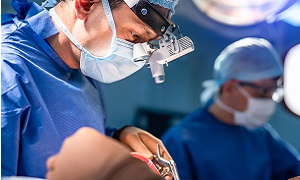Best Doctors in India for Rotationplasty
Best Hospitals in India for Rotationplasty
- City: Bengaluru, India
Hospital Highlights:
- Fortis Hospital Bannerghatta, Bengaluru was established in 2006.
- The hospital is a 276 bedded multi-specialty tertiary care facility.
- The hospital specializes in cutting-edge medical technology and dedicated patient care services.
- The hospital is equipped with state-of-the-art technologies like trans-radial angioplasty, trans-abdominal cardiac surgery, and computerized TKR navigation surgery.
- The hospital provides specialty medical services in cardiology, cardiac surgery, orthopedics, neurology, neuro-surgery, GI, and Minimal Access Surgery (MAS).
- City: Chennai, India
Hospital Highlights:
- Fortis Malar was established in 1992 and was formerly known as Malar Hospital.
- The hospital specializes in cutting-edge medical technology and dedicated patient care services.
- The hospital is multi-specialty, tertiary care facility with 180 beds.
- The hospital offers comprehensive medical care in specialties such as cardiology, cardio-thoracic surgery, neurology, neurosurgery, orthopedics, nephrology, gynecology, gastroenterology, urology, pediatrics, and diabetes.
- City: New Delhi, India
Hospital Highlights:
- Established in 1996, Pushpawati Singhania Research Institute is one of the top hospitals in the NCR region, as well as one of the top facilities in India for gastroenterology. The hospital is one of South Asia’s first institutes in medical and surgical treatment for diseases related to digestion.
- The hospital is equipped with state-of-the art facilities coupled with the latest equipment as well as renowned consultants from various parts of India as well as other parts of the world.
- City: New Delhi, India
Hospital Highlights:
- State-of-the-art technology and devoted healthcare professionals have been brought together under one roof at Venkateshwar Hospital to provide genuine medical care. The hospital’s professionals work together as a team to deliver the best possible treatment to their patients, using the most sophisticated equipment and information technology.
- Venkateshwar Hospital’s mission is to attain global excellence in healthcare by employing evidence-based, ethical clinical practices and cutting-edge technology by a team of highly skilled experts.
- City: New Delhi, India
Hospital Highlights:
- Sir Ganga Ram Hospital, New Delhi is known to provide the latest medical procedures with the latest technology in all of its units.
- The hospital has a team of reputed doctors, nurses, and healthcare professionals that ensure that patients receive quality care at affordable costs.
- Staffed with a team of highly qualified doctors, dedicated nurses, and paramedical and non-medical staff, the hospital aims to lead in healthcare delivery, medical education, training, and research.
- As per the vision of the founder, the hospital also provides free treatment to the economically weaker sections of society.
- Sir Ganga Ram Hospital also provides training to young doctors under the Diplomate in National Board(DNB) program. The DNB program at the hospital was started in 1984 and it is known for currently running the maximum number of DNB specialties in the country. It also has the distinction of having the first bone bank in India.
- City: Kerala, India
Hospital Highlights:
- Established in 2019, Apollo Adlux Hospital is the first Apollo Hospital in Kerala and the 73rd hospital owned by Apollo Group in India. With the state’s most advanced, comprehensive healthcare infrastructure and cutting-edge technologies, Apollo Adlux Hospital stands as an example of medical excellence in Kerala.
- With over 34 multi-specialty departments, the hospital believes in providing the best quality treatment to its patients at affordable rates, ensuring comfort at their difficult times.
- The 300-bed hospital is managed by a team of highly qualified and experienced experts who delivers exceptional hospitality to their patients and treats them with great compassion.
- With its affiliation with the Apollo Hospitals Group, the hospital aims in providing patients with top-notch healthcare services while also serving communities in Kerala.
- The hospital has good railway and road connections, and is conveniently close to Cochin International Airport.
- City: Gurugram, India
Hospital Highlights:
- Situated near DLF Cyber City, Gurugram, Narayana Superspecialty Hospital is one of the top medical facilities in the Delhi NCR region, catering to the needs of the people. Known for its commitment to quality medical care and patient service, the hospital is a state-of-the-art facility with planned and well-equipped sections, which includes a spacious OPD area as well as comfortable patient rooms.
- It is the closest super-specialty hospital from Indira Gandhi International Airport towards Gurugram, and also the nearest super specialty hospital from DLF Cyber City. It is also close to major residential areas in Gurugram.
- It is part of the renowned Narayana Health Group. Established in 2000, by Dr. Devi Shetty, a renowned cardiac surgeon, it has grown to be one fo India’s leading healthcare groups.
- City: Noida, India
Hospital Highlights:
- Fortis Hospital, Noida, stands as one of the oldest and most trusted healthcare institutions in the region, setting a benchmark for comprehensive medical care.
- As the second mega hub hospital in the Fortis Healthcare Group, Fortis Hospital, Noida, upholds a legacy of trust among more than 1.2 million patients. By integrating top-tier professionals with cutting-edge technology, the hospital delivers superior treatment across various medical disciplines.
- Specializing in advanced Neurosciences, Orthopedics, Kidney and Liver Transplant Programmes, Fortis Hospital, Noida has successfully performed over 1,500 transplants, solidifying its reputation as a leader in specialized medical interventions.
Rotationplasty
Rotationplasty, a procedure which is used for the treatment of bone cancer (osteosarcoma), in the area of the knee or knee joint. This procedure is generally meant for children less than twelve years of age. In some cases, children who are older or adults might also be able to have rotationplasty.
This procedure is for those patients who would need an above the knee amputation due to the size of their tumor. An important factor is that the nerves can be saved, as they are required for the proper functioning of the ankle or foot.
Purpose
Since children continue to grow till adulthood, this procedure has a benefit, which is that the bone will continue to grow, thus helping the children to stay physically active. The prosthetic leg which is used with the procedure will be fitted and changed as the child grows.
There are alternatives to rotationplasty such as prosthetic knee or amputation. However, this usually limits the patient’s activity and the person is unable to play sports or perform any strenuous activity. When a child uses a prosthetic knee, generally multiple surgeries are required over the next growing years.
Many children who undergo rotationplasty can however continue to be active and take part in physical activities such as soccer, running, running, skiing, bicycling and more.
In addition, rotationplasty also helps to maintain the function of the nerve and blood vessel. Therefore, patients who undergo this surgery don’t suffer from the side effect called phantom limb pain, i.e. pain after amputation where the limb was removed. In order to be a candidate for this procedure, sciatic and other vital lower leg nerves must be intact and working.
Preparation
First, you should discuss with your doctor what you or your child needs to do while preparing for the procedure. Ask whether it is necessary to stop taking any kind of medications such as blood thinners. If the surgery is for you and you smoke, it is important to stop it before the procedure. If there are any changes in your overall health, let your healthcare provider know about this.
If you are interested in this procedure but are not sure if it is the right option for you or your child, then you can ask your doctors if they can put you in touch with other children and/or families who have gone through the procedure. This can help you better understand what you should expect. Generally most families find this step to be extremely helpful in making a decision.
Procedure
During the rotationplasty procedure, the parts of your leg and thigh bones which are having tumors are removed along with some of the healthy bone for obtaining a clean margin. This can include some of the lower part of your femur bone, the knee joint as well as some of the top of your lower leg. The lower part of the leg which includes the foot and ankle will next be rotated 180 degrees to face in a backward direction. This will then serve as a new “knee joint” and then attached to your thigh (femur).
The newly attached ankle joint will then act as your new knee and the backward-facing foot will fit into a custom-fit artificial lower limb.
Recovery
Recovery from a rotationplasty requires a stay in the hospital, which last up to around seven to ten days. Most patients will be going home in a cast. How much time one needs in the cast will depend on how long it takes for the bone for healing. Healing may take longer if the patient is undergoing treatments such as chemotherapy. Once the bones and wounds are healed, the child can be fitted for the prosthesis of the lower leg. During this time, the patient will most likely need a wheelchair or at least a crutch.
Physical therapy is an important part of the recovery process. It can help the patient to learn how he/she can use the ankle joint as a knee joint and how he/she can walk with the new leg/prosthesis. They will also need to learn how to wear and adjust the prosthesis. This generally requires a considerable amount of time and effort from the patient`s side. The length of therapy can vary depending on various factors. As a child who went through this procedure, continues to grow, they will be requiring a new prosthesis and may need short stints of physical therapy with each new prosthesis.
In the case of children, physical therapists need to meet with the patient and family before the procedure so that he/she may evaluate the needs of the patient and what they hope to achieve through the procedure.
Risks
As with any surgical procedure, rotationplasty has few risks and side effects. It is important to note that this is a highly specialized procedure and it is not done very often. Make sure the surgery is done at a reputable hospital or center and performed by a surgeon with experience.
Risks and side effects that are associated with a rotationplasty can depend on the patient as well as the procedure, as some patients might need more extensive reconstruction of blood vessels. General risks might include:
- Reactions to anesthesia/medications
- Infection or wound healing problems
- Bleeding or blood clots
- Injury to the nerves
- Problems with the blood supply to the grafted lower leg
- Inadequate bone fusion which might cause the need for additional surgery











